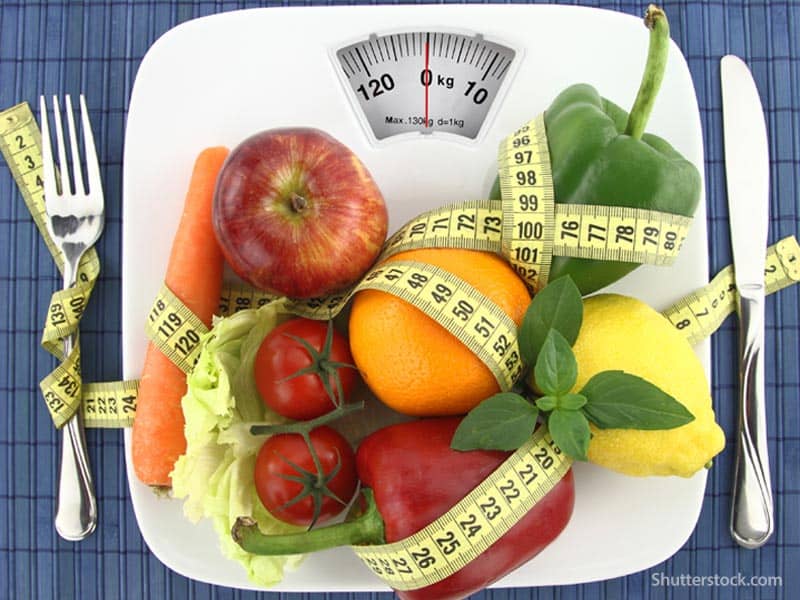
Shutterstock.com
Keep it Out of the House
Everyone knows the feeling. There is a box of cookies or a bag of chips tucked in the back of the cabinet, and you can hear it calling to you in the middle of the night. You swear you are going to eat healthy. You will save those chips for your weekend movie night with your partner, or you promise yourself that you will only eat two Thin Mints. Before you know it, you have munched your way through the chips by Wednesday afternoon and have to buy more for the weekend, or you have eaten the entire box of Thin Mints.Resisting temptation is not easy, especially when it does not seem to have many consequences. After all, two Thin Mints will not cause serious problems. Those two cookies every day, however, add up quickly by the end of the week. Rather than test your willpower day in and day out, keep the fatty foods out of the house. Stop buying chips and cookies. If you know you want to have something special on the weekend, go to the grocery store and buy it on Friday. Do not store it in the house all week where it can tempt you.
Buy Low-Fat Options
As it became more and more obvious how much damage too much fat could do to a person’s body, low-fat and no-fat options became increasingly common in grocery stores. This means that a person does not have to go all-natural, organic and vegetarian to cut back on their fat intake. Simply buy low-fat options of the foods your normally eat. If you love to take crackers to work, buy low-fat Wheat Thins. If your son refuses to eat a sandwich that does not have cheese on it, stock up on two percent cheese. Get into the habit of checking the fat content of everything you buy, and choose the lowest fat option. This goes for meat as well. When you make burgers in the summer, buy lean ground beef or use ground turkey instead. When it is time for roast beef in the winter, buy a roast that appears to have the least amount of fat on it and trim off the remaining fat on the roast. Low-fat options will keep your favorite recipes healthy while still allowing you to enjoy the same great tastes you always loved.Healthier Substitutions
If you cook, you know that recipes are more artistic guidelines than hard and fast laws of physics. This means that recipes can be altered with ease according to a person’s taste or the availability of ingredients. Anyone who has ever run out of buttermilk probably knows the old trick of using a mix of lemon juice or vinegar and milk instead. Zucchini can stand in for eggplant, and a mix of oregano and thyme can take the place of basil in a pinch.The flexibility of most recipes means that cutting down on the fat content of your favorite dishes is easier than it may appear. Swap out the heavy cream for unsweetened low-fat evaporated milk. Use olive oil instead of butter when making sauces. Have Greek yogurt take the place of mayonnaise and sour cream. Healthier substitutions for common ingredients can be found in the backs of many cookbooks or on one of the hundreds of thousands of recipe blogs that span the internet.
Go Homemade
Whenever possible, go homemade. Cooking at home will allow you to control exactly how much fat each dish contains. It will also let you make healthier substitutions as possible. In addition, cooking and eating at home also can help with portion control. When you get take out or eat out, most people tend to finish whatever is on their plate, regardless of whether or not those portions are the correct size. When you eat at home, you can control how much is on your plate.Cooking at home is also a good way to keep down the number of goodies you are eating. If you have to take 20 to 30 minutes to whip up a batch of homemade cookies before you can eat them, you are likely to find something else to eat when you are in the mood for a small snack.
Measure Everything
How much butter do you usually put on your toast in the morning? How many cups of milk do you add to your cereal? How much cheese did you dump on your spaghetti? If you are like most people, the answer to all those questions is some variant of “I have no idea.” This means that you have no idea what you are actually putting in your body. Did you have just a little bit of fat, or did your lunch exceed your recommended fat content for the rest of the week?When you are trying to cut down on anything, be it fat, sugar, calories or sodium, measure absolutely everything. A tablespoon of butter is a serving size. Measure out a tablespoon of butter and use it on your toast. If you feel you need more, measure out another tablespoon. If you can see how much you are using, you will become more inclined to start dialing back how much butter or cheese you use. You will also know how much fat you are eating and where you need to cut back.
Swap Cooking Spray For Butter or Oil
Just about every recipe that involves a pan begins with the instructions “grease the pan.” The “grease” used is usually tablespoons of butter or oil, both of which are high in fat. Despite what the recipe says, it does not take three tablespoons of butter to keep lasagna from sticking to a glass pan. A little bit of cooking spray will work just as well and contains a tiny fraction of the fat.Flavored cooking oils can do more than just grease pans. Olive oil and coconut oil based cooking sprays taste like the oils they are based on. Spray the vegetables you plan to sauté with cooking spray instead of dumping a couple tablespoons of oil on them. The spray will leave a lighter layer of oil which will cook the vegetables nearly as well without leaving a heavy coating of oil on the finished vegetables and keep the fat content down.
Oven Fried Instead of Deep Fried
Most people love fried foods. Fried chicken, French fries, fried calamari, coconut shrimp, you name it. Fried foods, however, are extremely high in fat. If you want to cut down on your fat content but cannot let go of your craving for chicken nuggets, oven fry your chicken instead of deep frying it.Oven fried foods are dipped in eggs and breadcrumbs to achieve a similar coating to traditional battered-and-deep-fried foods. The dipped foods are then baked in the oven instead of dropped in boiling oil. This creates the same sort of crunch outside and soft inside that is so popular in traditional fried foods without requiring a person to ingest copious amounts of oil and fat.
Cutting down on how much fat you consume does not have to require a specialized coach or serious lifestyle changes. A few minor changes to your grocery list will take care of most of it. Before you know it, you will be feeling happier, healthier and more energized. Then you will wonder why you ever craved those heavy, high-fat meals in the first place.

